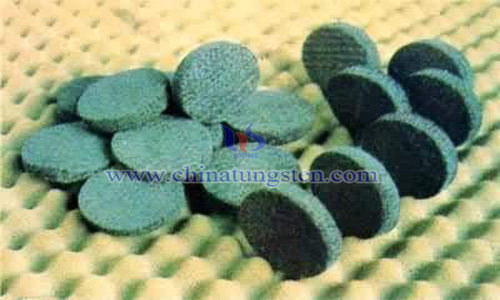A Hydrocracking Catalyst for Recycling Tungsten
- Details
- Category: Tungsten Information
- Published on Sunday, 09 June 2019 15:22
With the declining oil resources, the production of crude oil has become heavy and inferior. Refining and chemical enterprises are faced with the problem of light weight of domestically produced inferior heavy oil and imported inferior heavy oil. At the same time, along with increasingly stringent environmental requirements, it is important to control the quality of steam and diesel to meet the production of clean fuels.
Slurry bed hydrocracking technology can process high-quality, high-carbon, high-sulfur content inferior heavy oil raw materials, and has the advantages of high conversion rate and high light oil yield, and has become an excellent process to improve the development trend of resource utilization. Catalysts are a key factor in hydrogenation catalysis, and tungsten-based materials have a wide range of applications in hydrogenation catalysis. However, the hydrocracking catalyst adsorbs toxic substances such as heavy metals during use, and if not treated, it will cause environmental pollution, especially for water resources. At the same time, the waste catalyst contains high-value active metal tungsten, and efficient recycling will inevitably produce huge economic and social benefits.

Based on this, some scholars have designed a recycling scheme for hydrocracking catalysts, which can realize efficient recycling of metal tungsten, and has the advantages of simple process, mild conditions, high recovery rate of metal tungsten, and convenient low-cost industrial application. Specific operations include:
1: The waste tungsten-based hydrocracking catalyst is subjected to oxidative baking, and the oxidized calcined product is dissolved in aqueous ammonia, followed by filtration and collection of a liquid phase. Among them, the tungsten-based hydrocracking catalyst is an oil-soluble tungsten-based slurry bed hydrocracking catalyst, and the conditions of the oxidative roasting are specifically: calcination temperature 300-700 ° C, calcination time 1 to 6 h; ammonia water addition amount and oxidized roasting product The mass ratio is 2 to 6 mL: 1 g, and the dissolution temperature is 30 to 90 ° C, and the dissolution time is 1 to 6 hours.
2: A vulcanizing agent is added to the obtained liquid phase to carry out a reaction, followed by crystallization, filtration, and water washing to obtain a sulfide metal salt. Wherein, the vulcanizing agent comprises one or more of ammonium sulfide, sodium sulfide and potassium sulfide; the molar ratio of the sulfur content in the vulcanizing agent to the tungsten content in the catalyst is (4-6): 1; the reaction temperature is 20~ The reaction time is 0.5 to 3 h at 100 ° C, and the crystallization time is 4 to 20 h.
3: reacting the sulfide metal salt with an organic acid to obtain a precursor of the self-sulfiding oil-soluble tungsten-based catalyst, and then decomposing and decomposing to obtain an active metal tungsten sulfide, and in the active metal tungsten sulfide, the metal tungsten content is 1% by weight to 20% by weight. .
The recycling method of the oil-soluble tungsten-based catalyst mentioned above has the advantages of simple process, mild conditions, high metal tungsten recovery rate, and convenient low-cost industrial application. The oil-soluble tungsten-based catalyst prepared by recycling has excellent hydrogenation performance, and is particularly suitable for a low-cost slurry bed hydrocracking process of high metal, high residual carbon, high sulfur and inferior heavy oil.
- Tungsten Manufacturer & Supplier, Chinatungsten Online: www.chinatungsten.com
- Tungsten News & Prices of China Tungsten Industry Association: www.ctia.com.cn
- Molybdenum News & Price: news.molybdenum.com.cn
- Tel.: 86 592 5129696; Fax: 86 592 5129797; Email: sales@chinatungsten.com



 sales@chinatungsten.com
sales@chinatungsten.com